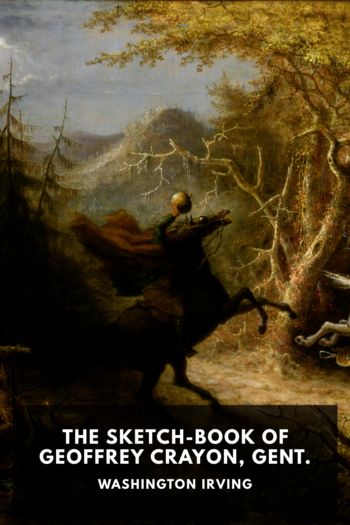Loverly:The Life and Times of My Fair Lady (Broadway Legacies) by McHugh, Dominic (e reader comics TXT) 📕

Read free book «Loverly:The Life and Times of My Fair Lady (Broadway Legacies) by McHugh, Dominic (e reader comics TXT) 📕» - read online or download for free at americanlibrarybooks.com
Read book online «Loverly:The Life and Times of My Fair Lady (Broadway Legacies) by McHugh, Dominic (e reader comics TXT) 📕». Author - McHugh, Dominic
WRITING BROADWAY HISTORY: DOCUMENTARY SOURCES FOR THE GENESIS OF MY FAIR LADY
My Fair Lady was the most successful musical of its day, yet surprisingly little is known about the creation of the piece. Although the story of its genesis has often been retold, the main source of information for most accounts until now has been Alan Jay Lerner himself. The first third of his memoir, The Street Where I Live, is devoted to a highly entertaining report of how he came to write My Fair Lady with Frederick Loewe and the journey that team undertook to bring it into being.2 However, Lerner’s story was written after a significant lapse of time, and the author was prone to romanticize events or completely omit them from his book. Furthermore, little has been said in print about the attempts of other composers to write about the show or of the contribution of the Theatre Guild (producers of Rodgers and Hammerstein’s Oklahoma! and Carousel) in trying to get the project off the ground.
Rather than regarding Lerner’s autobiography as the primary source of information about the genesis of the show, this book depends largely on contemporary documentary sources, acknowledging Lerner’s version of events only where no other source exists. While there is no major collection of correspondence belonging to either Lerner or Loewe currently held in any public collection, the Theatre Guild’s role in the musical is illustrated by the company’s papers at Yale University, which also houses details of Loewe’s projected show with Harold Rome during 1953–54. Background on Cecil Beaton was obtained from his diaries and correspondence at St John’s College, Cambridge, and similar information about Michael Redgrave was found at the Victoria and Albert Museum. Hanya Holm’s personal notes and correspondence at the New York Public Library brought new insights into the choreography for the show, especially the creation of the ballet; and the bulk of the story was constructed from the papers of Herman Levin, the producer of My Fair Lady, held by the Wisconsin Center for Film and Theater Research (also home to Moss Hart’s papers).
Some of these sources have been written about previously. In particular, Steven Bach’s excellent biography of Moss Hart takes advantage of the Levin and Hart papers, and the riveting epilogue of David Mark D’Andre’s doctoral dissertation on the Theatre Guild gives by far the most detailed account of Lerner and Loewe’s initial attempt to write the show.3 Both of these sources remain problematical, largely due to a reliance on Lerner’s book to fill in the gaps, and no attempt has been made to marry up all the currently available documentary evidence on the genesis of My Fair Lady until now.
Although it would be a mistake to focus too sharply on Shaw when assessing Lerner and Loewe’s musical, an account of the genesis of My Fair Lady must begin with his Pygmalion, the play on which it is based. The first two chapters of this book deal with two key phases, with the summer of 1954 as the cut-off point between them. The first period concerns the approaches of various parties to Shaw to turn Pygmalion into a musical and his persistent refusal to allow this; his giving the screen rights for his plays to Gabriel Pascal, the Hungarian film maker; Pascal’s decision to make Pygmalion into a musical in the wake of the success of his 1938 film version of the play; his joining forces with the Theatre Guild to commission various composers to attempt to write the piece; the signing of a contract by Lerner and Loewe to write the musical, with the hope of having Mary Martin as Eliza Doolittle; Lerner and Loewe’s backing out of their contract, having failed to find a way to do the piece; and finally, the Theatre Guild’s eventual abandonment of the project in early 1953.
The second period, discussed in chapter 2, involves Lerner and Loewe’s decision to try again with the show during the early autumn of 1954, following Pascal’s death; their hiring of Herman Levin to produce it instead of the Theatre Guild, and the latter’s unsuccessful battle to wrest the rights to Pygmalion back from them; Lerner and Loewe’s drawn-out search for an actor to play Henry Higgins, as well as other cast and production team members; the creation of the score and script in the background of all these practical dealings; and the mounting of the piece on the Broadway stage on March 15, 1956 after a rehearsal period in New York and tryouts in New Haven and Philadelphia. A brief account is also given of Lerner and Loewe’s activities between late 1952 and the middle of 1954, when they each attempted to write one or more shows with another collaborator. In a sense, then, this is the story of two My Fair Ladies: one aborted version, and one completed version. By clarifying the genesis of the show in this way, we can understand more fully how the piece came into being and also





Comments (0)